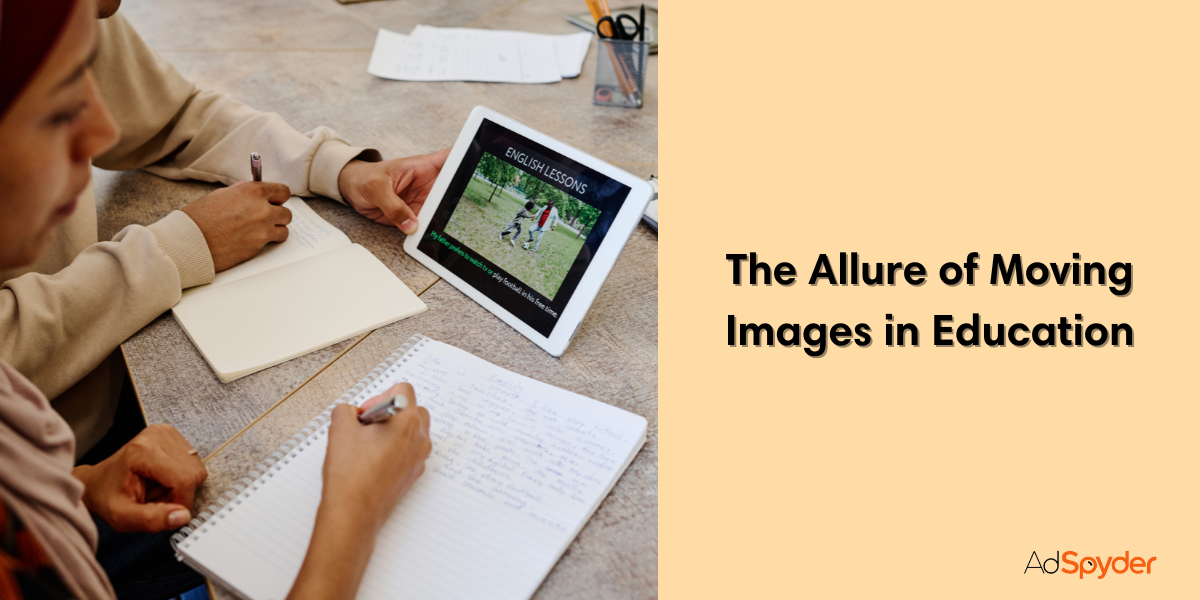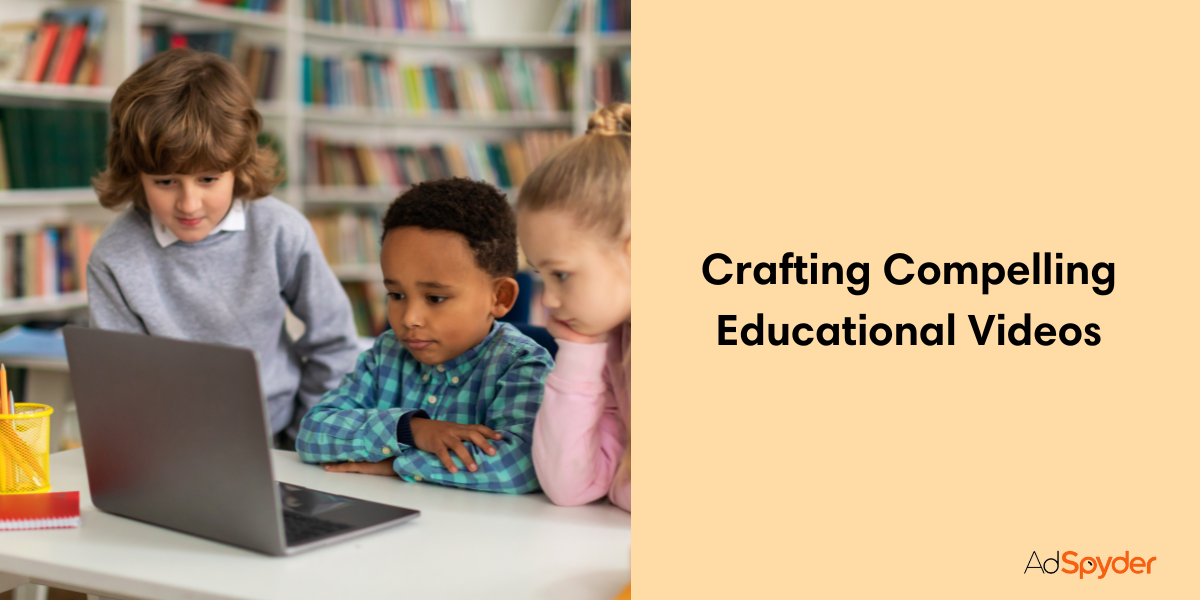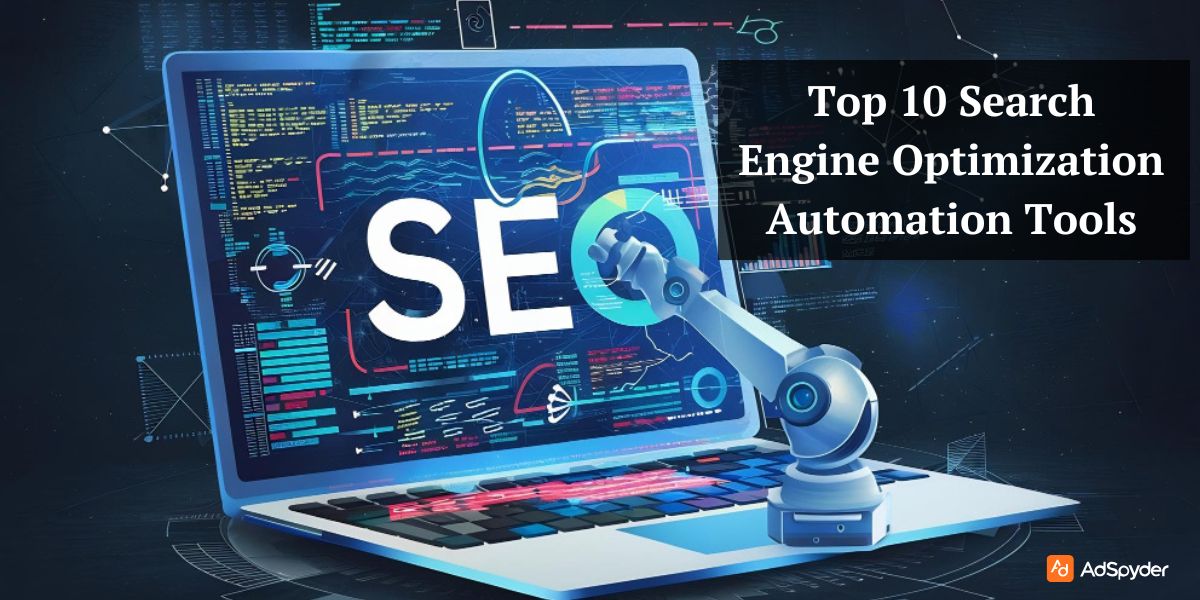As a media, video is embedded in most aspects of our lives today, including communication, learning, and entertainment. Various surveys conducted in the recent past reveal that the population has a propensity to get informed by watching videos on the web rather than reading the content. This should be rather encouraging to educators as it offers them a chance to optimize the use of Video Marketing for Educational Content.
Ready to Elevate your Marketing Strategy?
When professionally produced, instructional videos can grab the learner’s focus, teach in a way that is more easily retained, and in a manner that appeals to their preferred learning style. With the availability of technology in producing high quality and distributing videos, it is about time for schools, universities, training programs, and educators in general to harness the possibilities that videos offer in order to enhance students’ learning achievements.
Summary of Video Marketing for Educational Content
- Introduction: Highlighting the evolving educational landscape and the growing importance of engaging learning experiences.
- Why Video? Unveiling the numerous benefits of video marketing for educational content, including increased engagement, improved knowledge retention, enhanced accessibility, and catering to diverse learning styles.
- Choosing the Right Video Format: Exploring various video formats that excel in educational settings, such as lectures, explainer videos, demonstrations, animations, and interactive videos.
- Crafting Compelling Educational Videos: Discussing practical tips for creating high-quality instructional videos, including scripting, filming, editing, and incorporating visuals and audio effectively.
- Optimizing for Engagement: Providing strategies for maximizing audience engagement with your educational video content, including utilizing captions, interactive elements, and promoting audience interaction.
- Inspiring Examples: Showcasing successful examples of educational video content creators and platforms that are transforming the learning experience.
- FAQs: Addressing common questions regarding video marketing for educational content.
- Conclusion: Recap, emphasizing the transformative power of video for education. Final thoughts on the importance of continuous learning and adaptation. Call to Action – encouraging educators and content creators to embrace video marketing and elevate their educational offerings.
Why Video? The Allure of Moving Images in Education

The dominance of video in today’s digital world extends to the realm of education. Here’s why video is a game-changer for learning:
- Engagement Powerhouse – It goes without saying that video is a popular format with learners because it captivates their attention. Through the use of movement, visuals, music, and voice-overs, our senses are engaged, and our attention is captured in a way that we cannot be through plain text. This is particularly useful for employee engagement and educational videos.
- Knowledge Retention on Steroids – It is also important to note that videos are significantly more effective for learning and retaining information due to the multimedia format that is provided by the application. It is a fact that when information is presented in an iconographic manner the depth of penetration is much deeper as compared to descriptions in mere text or words of spoken language.
- Accessibility Champion – Thus, the use of online video can overcome the literacy disadvantages and help teachers extend to other groups of learners. Some of the options available in the in-built features of sites like YouTube include captions and transcripts, which are essential for those with feeble hearing or slightly impaired language comprehension ability.
- Catering to Diverse Learning Styles: Video allows for the incorporation of different teaching styles, catering to diverse learning preferences. Educators can utilize lectures, demonstrations, animations, and interactive elements to address the needs of various learners within a single video.
Choosing the Right Video Format: Matching Content to Learning Objectives
The optimal video format for your educational content depends on the subject matter, learning objectives, and target audience. Here are some popular choices to consider:
- Lectures- Lectures that are recorded avail anytime and anyplace educational opportunities for learners. They can refresh their memory of the explanations given previously and they do not miss anything that they could not grasp the first time through.
- Explainer Videos – These short animated clips are best defined as graphics and characters, voice over and sometimes funny present complex concepts, ideas or processes in a simple manner taking them through step by step.
- Demonstrations – Videos where the teacher performs or explains activities, experiments or examples enable students to watch procedures take place in detail. Letting work flows, methodologies applied or reactions take place enforces theory with practical impacts aggressively. You can also combine entertainment concepts into these videos to create demotainment videos.
- Animations – For teaching complex structures, interaction processes, or molecular actions, creative animation depicts the idea in a more comprehensive and interactive manner. The visually learned mental models are, over time, more explicit than when the student simply tries to figure how things work, move and interrelate.
- Interactive Videos – These videos incorporate questions and quizzes or questions, prompts or decisions in the course of the video which engages the learners’ knowledge acquisition process. Pupils remain actively participating in responding to the challenges that accompany the lessons as they progress.
Must see: Video Marketing in Healthcare : Key Techniques for Success 2025
Crafting Compelling Educational Videos: A Recipe for Learning Success

Equipping yourselves with the following tips will empower you to create high-quality instructional videos that promote effective learning:
- Begin with a powerful transcript – Before shooting a video lesson, the educational content should be properly outlined and well-coordinated to show alignment with learning goals. It is necessary to outline clear content connections and use an introduction that sets ideas and a conclusion that summarizes them.
- Filming & Production Essentials – For high-quality images, use high-definition cameras, and always ensure that there is good sound quality through external microphones. Coordinate the works in a manner that you will have to employ the key light, fill light and back light to give you good visions, colours and contrasts.
- Editing for Impact – Edit any long lines or extraneous information out during the cut to minimize run-time and to focus only on important details that are relevant to the lessons taught. Insert b-roll clips pertinent to the voiceover, to add more visibility to augment the spoken description.
- Visuals & Audio Power – Ensure you stand out when you produce educational videos by customizing your event’s motion graphics, stylized text bullet points, and smooth animation. Try using background music in cases where it is appropriate but do not let it take attention away from the words people speak.
Follow these tips and focusing on delivering valuable, well-structured content. You can create educational video experiences that not only inform but also inspire your audience.
Optimizing for Engagement: Keeping Learners Hooked
It is one thing to get the videos out there to gain attention but there are several other factors to consider. The other half is keeping audiences glued from start to finish.
- Captivate from the Start – Engage the viewers right from the start of the show with a jolt of a number fact, a query or a performance teaser relevant to the topic to be covered. Presenting an interesting question which needs to be solved also captures interest. This is a vital aspect of writing that requires one to be concise and to divide information into manageable sections.
- Embrace Captions & Transcripts – The availability of captioning enhances video commodity consumption. This is especially for those who have difficulties understanding the audio track. Provide transcriptions of web content so that the page can be made searchable. This makes it more easy to find, and optimized for various search engines.
- Interactive Elements – Features such as integrated quizzes, surveys should be used for occasions such as checking the understanding of learners during the learning process.
- Promote Audience Interaction – These are the questions one can ask to foster discussion in a given online forum: This kind of platform requires that members share links for the purpose of peer learning. Include the videos that users submit in the focused concepts to enhance engagement.
Inspiring Examples: Learning in Action

Let’s delve into some successful examples of educational video content creators and platforms that are transforming the learning experience:
- Crash Course: This is an active YouTube channel with a large number of subscribers. It offers interesting and well explained lessons on various topics and interesting topical subjects. This includes history, science, literature, and philosophy. The main opinion of the channel’s hosts includes the use of the cheerful disposition and the use of pictures. The channel registers the concepts in the simple way to ensure the masses can understand and follow.
- Khan Academy: This is a non-profit organization. It is based on education where learners can freely access quality videos on different acadmic fields. The platform of Khan Academy is built around a number of conceptually tight 5–15 minute video clips, followed by practice exercises where traditional lecture style is used with compressed self-paced videos irrespective of the student’s age.
- TED-Ed: It is a branch of the famous TED Talks. TED-Ed specifically targets the development of animated tutorial videos on various themes. It is easy to explain a concept since the platform offers great animations and it follows a good narration.
The above examples make evident a monumental opportunity for video marketing with educational content. Generate your own educational video materials that will both captivate the viewers and make them willing to learn. Find inspiration in the positive examples of the successful performers presented above.
FAQs
While high-end equipment can enhance production value, you can start with a smartphone, a basic microphone, and a tripod. Focus on clear audio and good lighting for impactful videos.
Incorporate quizzes, polls, clickable hotspots, or branching storylines within your videos. You can do this through online editing tools or platforms designed for interactive video creation.
What equipment do I need to create educational videos?
While high-end equipment can enhance production value, you can start with a smartphone, a basic microphone, and a tripod. Focus on clear audio and good lighting for impactful videos.
How can I make my educational videos more interactive?
Incorporate quizzes, polls, clickable hotspots, or branching storylines within your videos. You can do this through online editing tools or platforms designed for interactive video creation.
How long should my educational videos be?
Aim for concise and focused videos, ideally between 5-15 minutes. For longer topics, consider breaking them down into a series of shorter videos for easier consumption.
Should I use a script for my educational videos?
Absolutely! A well-crafted script ensures your content is clear, well-organized, and stays on point. This is especially important for complex topics.
Where can I promote my educational videos?
Share your videos on YouTube, educational platforms and social media channels. You can also embed them directly within your website or learning management system.
How can I measure the success of my educational videos?
Utilize video analytics tools offered by platforms like YouTube to track views, engagement metrics (likes, comments, shares), and completion rates. This data can provide valuable insights into audience preferences and help you refine your video content strategy.
Is it okay to use copyrighted material in my educational videos?
It’s generally advisable to use royalty-free music and visuals or obtain permission from copyright holders before using copyrighted material in your videos. Fair use guidelines may apply in certain educational contexts.
How can I stay up-to-date on the latest trends in educational video marketing?
Follow educational technology blogs and subscribe to YouTube channels of successful educational video creators. Attend industry conferences or webinars to stay informed about the latest trends and best practices.
Conclusion
Recap
By reading this guide, you have gained the knowledge and resource you need to harness video marketing for effective educational outreach. The benefits of using video in the classroom are multifold. They help in increasing engagement and knowledge. It also helps in accessibility and learning styles. We explored several types of videos appropriate for instructional context. The blog discussed specific guidelines to develop effective instructional videos. We gave tips on how to enhance viewers’ attentiveness. Key takeaway was that there are always new trends to follow and that the process should be iterative. We also used examples of effective existing educational video content producers. This demonstrates the potential of video in the learning process.
Final Thoughts
Video marketing plays an incredibly important role in shaping the future of education. Video can be a tool that can bring focus. It can become a go to method for teaching, educators. Information developers can create engaging and highly effective messages that will create the spark to further student’s learning. The essence of it all is to know your audience and to be in tune with them. Always look for innovative methods on how to enhance the educational video marketing strategies.
Call to Action: Unleash the Power of Video for Education
Start with these steps:
- Identify Your Learning Objectives: Determine what you want the viewer to gain from your educational video. This will guide your production and direction.
- Choose the Right Video Format: Determine the specific format of the video that is most appropriate for the content, goal, and audience to be reached.
- Craft a Compelling Script: This should contain good writing style, content presentation, and the direction and presentation of a call to action.
- Focus on Quality & Engagement: Consider adequate lighting, clear sound and choice of images on the screen. Engage the audience through participation and make full use of the possibilities of interactive forms of presentation.
- Promote & Analyze: Embed your videos with corresponding YouTube channels. Analyze the results by using special tools to assess the viewers’ response. Aadjust your action plan according to the data obtained.
Follow the above tools and adopt the idea of marketing through video. You will be in a position to produce meaningful educational videos that will enable users develop interest. It can facilitate learning among all age groups. Redesign your educational programs and engage students and educators’ interest. Create a lifelong learning process with the help of video.




